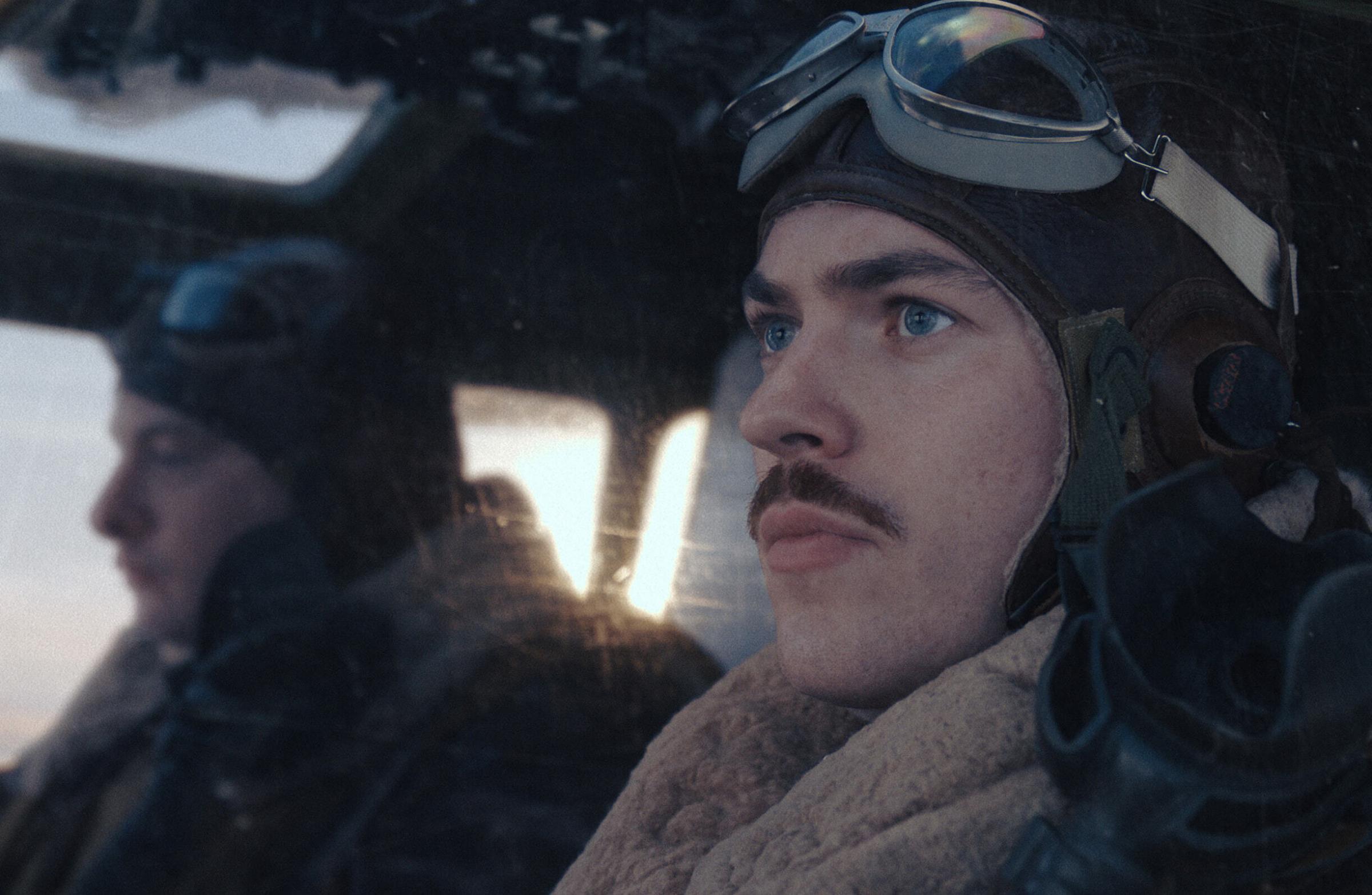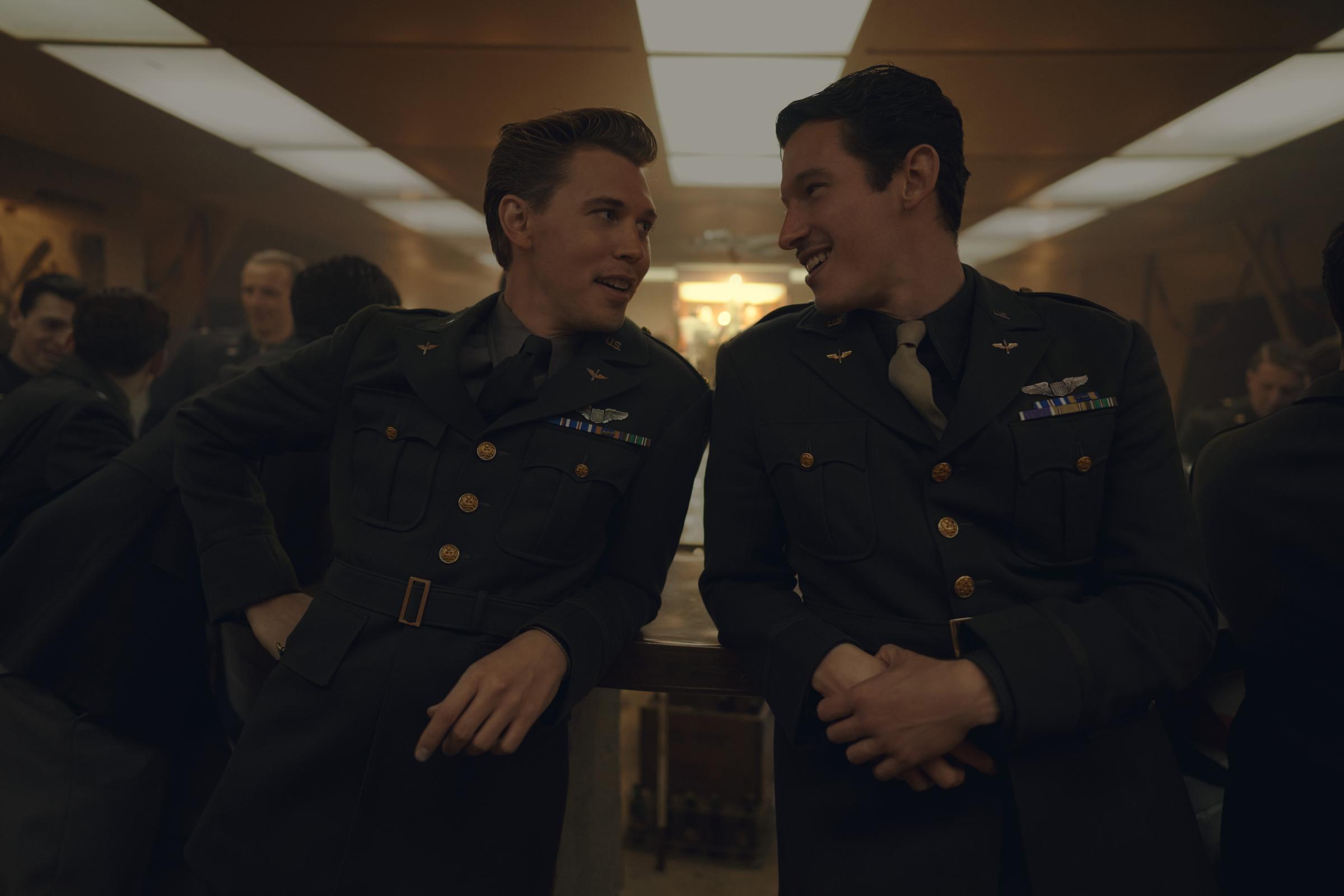Masters of the Air, a new World War II drama about bomber pilots, comes to Apple TV+ on Jan. 26. The limited series is produced by Tom Hanks and Steven Spielberg—the duo behind some of the most popular World War II TV and film productions, including Saving Private Ryan and Band of Brothers—and is based on the story of the real-life American Eighth Air Force, a unit of American bomber pilots who served during the war, primarily from 1942-1945. Masters of Air is inspired by a book of the same name, Masters of the Air: America's Bomber Boys Who Fought the Air War Against Nazi Germany by biographer Don Miller.
Over nine episodes, which will air weekly after the first two premiere on Friday, the series focuses on a few of the men in that unit, in particular, Maj. Gale Cleven (Austin Butler) and Maj. John Egan (Callum Turner) as they bond over navigating harrowing flying conditions and end up becoming friends for life.
Here, Miller, who spoke to several of the surviving men to write his book, breaks down everything to know about the American Eighth Air Force and the challenges they faced that form the drama of Masters of the Air.
The American Eighth Air Force was created just after the Pearl Harbor attack
According to Miller, the idea behind the group, established in 1942, was to create the first American long range bombing force in the hopes of quickening victory. “Its purpose was to obliterate the German economy and you could take out gigantic German industries accurately without killing a lot of civilians and win the war far more quickly than you could on the ground,” he says.
The bombers flew in planes that were unheated, according to Miller, making frostbite “as big an enemy as the Germans.”
“There were no medics on the plane. Oxygen masks froze. Guys carried morphine, but did not use it very well,” he says. “All you could do is put a wounded comrade on the freezing floor of the plane and hope you got back.”
The Eighth Air Force accounted for roughly half of all U.S. Army Air Force casualties, and its 26,000 fatality count trumps the total number of Marine fatalities (24,511).
How Masters of the Air portrays the bomber pilots
As the series and Miller’s work shows, the bomber pilots make for a “pretty jittery, nervous group of guys,” men who are tasked with not only a major responsibility but also taking care of a plane and each other. For example, Robert Rosenthal, played by Nate Mann in the Apple TV+ series, hummed classical music to keep his fellow servicemen calm.

The two main characters in the show are John Egan and Gale Cleven, who are worshiped by their fellow crew members for their flying skills. Masters of the Air follows the two, amid a group of men, as they risk their lives.
Egan may be a ladies man on the ground, but in the air, he was known for being steady and reliable. Egan and Cleven become lifelong friends. Egan attends Cleven’s wedding, and the bride is even wearing a dress made out of a parachute as an homage to their service.

How the American Eighth Air Force helped to end World War II
The American Eighth Air Force had three major accomplishments, according to Miller. First, they knocked out the German U-boat fleets in the Central Atlantic, menacing Wolf Packs that threatened to sever the economic lifeline by which cargo ships from the US carried food and war munitions to resource starved and heavily bombed Great Britain.
Then, they destroyed the German Air Force in brutal sky battles in the three month run-up to D-Day in early 1944. “There could not have been a D-Day landing had the German Luftwaffe controlled the skies over the invasion beaches,” Miller says. “We lost over 18,000 airmen in these tremendous sky fights.”
The third accomplishment occurred after D-Day when Allied air power destroyed great parts of the German war economy, including its oil refineries, canals, and railroads. Attacks on the enemy railroad network, by which coal was transported, also created a coal famine that brought Germany close to economic collapse and helped the Anglo-American ground forces take the war directly onto German soil. By this time, the Allied air forces, led by the 8th Air Force, had become "masters of the air” over all of Europe.
“That's something that a lot of people don't realize—the role that the air force played in helping to shorten the war,” Miller says.
More Must-Reads from TIME
- Why Trump’s Message Worked on Latino Men
- What Trump’s Win Could Mean for Housing
- The 100 Must-Read Books of 2024
- Sleep Doctors Share the 1 Tip That’s Changed Their Lives
- Column: Let’s Bring Back Romance
- What It’s Like to Have Long COVID As a Kid
- FX’s Say Nothing Is the Must-Watch Political Thriller of 2024
- Merle Bombardieri Is Helping People Make the Baby Decision
Write to Olivia B. Waxman at olivia.waxman@time.com